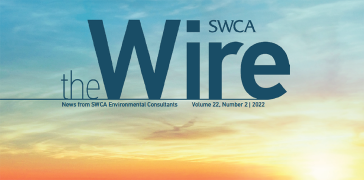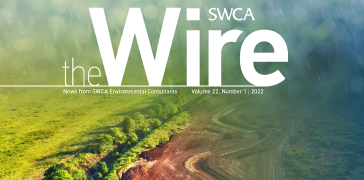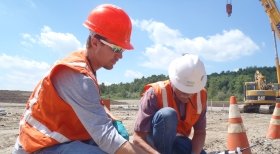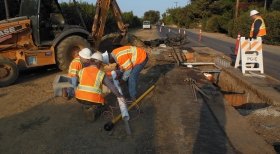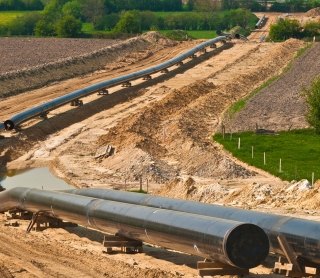
Energy producers must meet the growing market demand for fuel in the fastest, most efficient way possible. Yet a host of environmental regulations and public scrutiny make obtaining permits for exploration, drilling, and pipeline construction more challenging.
Our team provides environmental services and in-depth knowledge of federal, state, and local environmental regulations for conventional and unconventional oil and gas projects from the conceptual design and planning stages through construction, inspection and compliance, operations, reclamation and restoration, and closeout.
With experience in the major shale play regions — Bakken, Haynesville, Eagle Ford, Permian, Marcellus/Utica, Niobrara, Monterey, and the Scoop/Stack areas of Oklahoma, we understand the constraints you face with permitting timelines. We will work with you to meet your overall project construction and in-service schedule. SWCA can mobilize our technical experts to widely dispersed locales, under strenuous schedules and unfavorable weather conditions, to keep your projects on track during pre-construction, construction, and post-construction phases of your project. Our experience and long-standing relationships with many regulators also translate to our ability to provide these same services to other products, such as hydrogen, ammonia, and carbon dioxide, all of which will be needed more and more, in response to energy transition demands.
Association Involvement
• Independent Oil and Gas Association of West Virginia (IOGAWV)
• Interstate Natural Gas Association of America (INGAA)
• LA Pipeliners
• Louisiana Oil and Gas Association (LOGA)
• Montana Petroleum Association (MPA)
• Oklahoma Independent Petroleum Association (OIPA)
• Petroleum Association of Wyoming (PAW)
• Southern Gas Association (SGA)
• Women’s Energy Network (WEN)
Relevant Services
WATER RESOURCES
- Clean Water Act Section 404 Permitting
- Wetland Delineation and Wetland Crossing Permits
- Stream Permitting
- National Pollutant Discharge Elimination System (NPDES) Permit Applications
- Stormwater Pollution Prevention Plans (SWPPP)
Oil & Gas Processing
- Well Pad and Access Road Design Services
- Permitting for Dams and Impoundments Associated with Drilling Operations
- Erosion and Sedimentation Control
- Post Construction Stormwater Management (PCSM)
Environmental Compliance, Permitting, and Planning
- Air Quality Permits and Monitoring
- Applications for Permit to Drill (APD)
- Cultural and Historical Resource Surveys
- Erosion Sediment Control General Permits
- GHG Analysis and Reporting
- Threatened and Endangered Species Surveys
- Federal Energy Regulatory Commission (FERC) Compliance Permitting
- National Environmental Policy Act (NEPA)
- Phase I Environmental Site Assessments
- Environmental Inspection and Construction Compliance Management
- State and Local Permitting
- Constraints Analysis and Pipeline Routing
- Site Planning and Resource Avoidance
- Stakeholder Engagement and Strategic Communications
- Mitigation Planning
- Noise and Vibration Modeling and Measurement
- Plans of Development and Operations
- Interactive GeoWeb/GIS Planning, Monitoring & Decision Support Tools
- Restoration and Revegetation
Project Spotlights
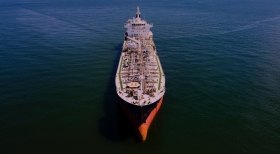
Natural Resource Damage Assessment
The Economics of Disaster
With SWCA’s growth this year, we now bring a wealth of expertise in Natural Resource Damage Assessments (NRDA), natural resource economics, and strategic environmental spill response management to our clients across the country. We sat down recently with Dr. Jeff Wakefield, a Natural Resources Technical Director in our Philadelphia office, to learn more about this growing sector and what it means for SWCA’s clients.
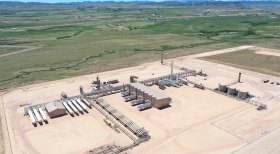
Oil & Gas
Doing Things Right in the Powder River Basin
The Powder River Basin (PRB) stretches from southeast Montana to northeast Wyoming within the northern Great Plains. Its rolling green grass and sage-covered plains serve as both a topographic drainage and geologic structural basin. The Basin is bordered by the Bighorn Mountains to the west and Black Hills Uplift to the east. To the south, it is framed by the Casper Arch, Laramie Mountains, and Hartville Uplift. In addition to being an important ecological treasure, the basin is rich in important resources like coal, crude oil, and natural gas.
PRB has been experiencing a resurgence in oil and gas production due to advances in horizontal drilling and hydraulic fracturing. These technological advances have made it a popular spot for companies to enter. The challenge for oil and gas companies is meeting the demand while also considering landowners, the environment, state and federal agency requirements, and a constantly changing regulatory landscape.
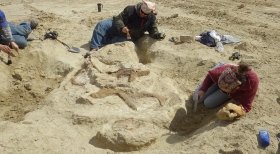
Archaeology
The Discovery of Triceratops Skull Demonstrates the Importance of Construction Monitoring
SWCA paleontologist Shawna Johnson did not expect to encounter any large significant fossils during construction monitoring for a Vermilion Energy USA (Vermilion) well pad overlying the Lance Formation in the Powder River Basin of eastern Wyoming.
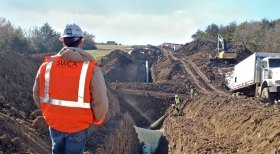
FERC Services
Market Insight: Federal Energy Regulatory Commission (FERC) Best Practices
Wondering what it takes to get your FERC project to the finish line? Our staff has worked on FERC projects and managed the environmental analyses for FERC-regulated natural gas pipeline and liquefied natural gas projects since the 1980s. Here’s what we’ve learned.

Planning
Got Species? Endangered Species Act Tools & Tips
Once a species is protected by the Endangered Species Act, activities that negatively impact those species could require authorization from the U.S. Fish and Wildlife Service. SWCA tracks threatened and endangered species issues closely and offers the following tips for staying ahead of the game.

